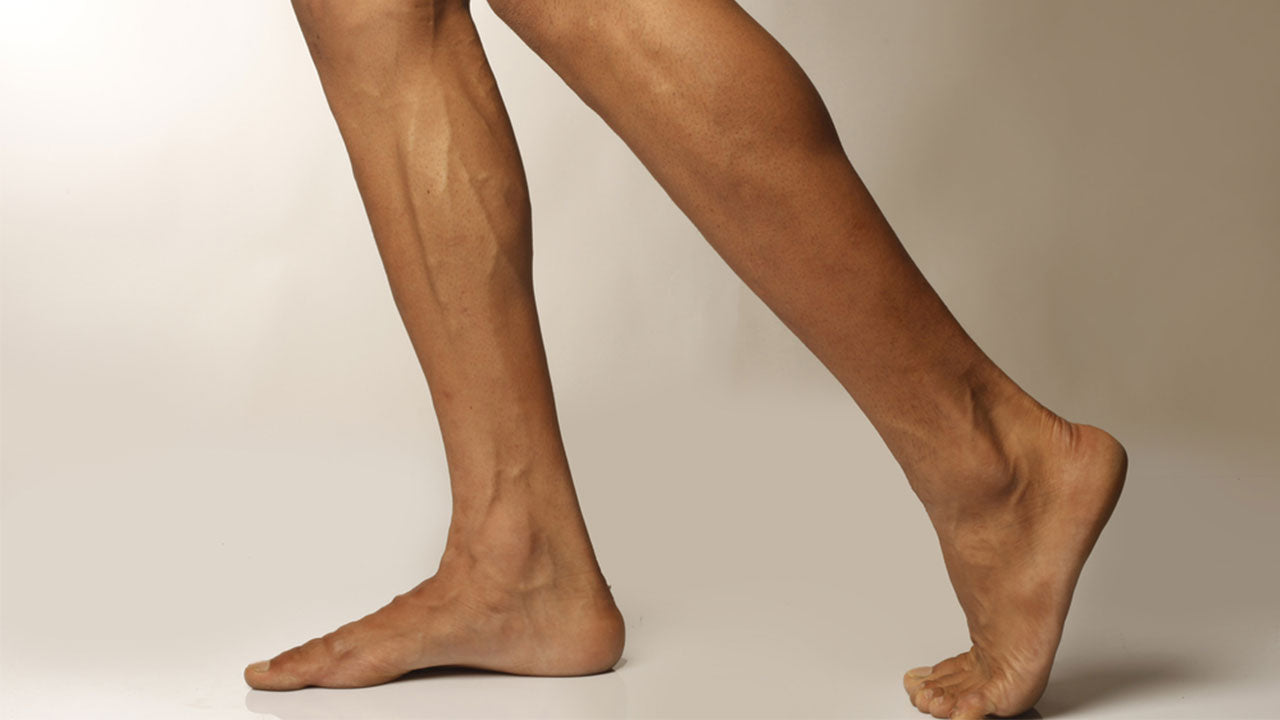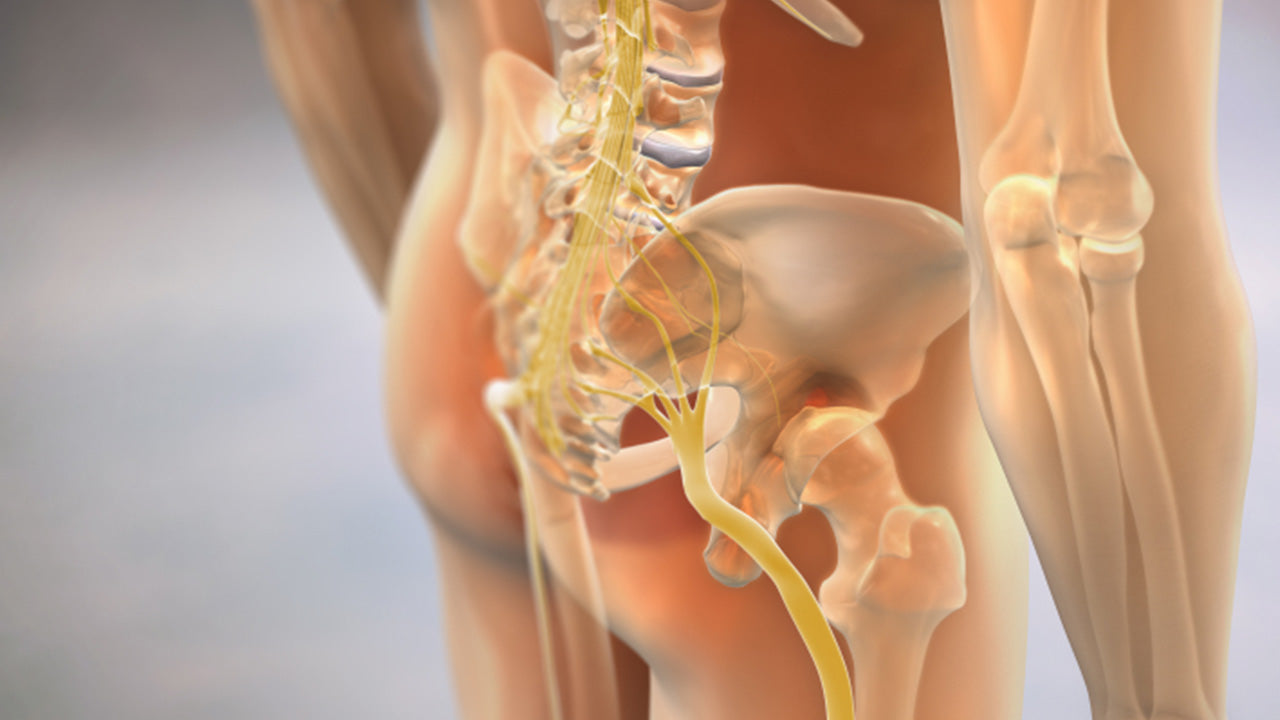Pulled and Torn Calf Muscle Recovery Time: How to Heal Your Lower Leg
 By: by Amino Science
By: by Amino Science

Anything from a calf strain to an outright muscle tear can hobble you, interrupting your ability to walk, to work out, and to enjoy your daily life. This article has details on how to rest the injured area, how long it takes for pulled or torn calf muscle recovery time, and how to strengthen the back of the lower leg to avoid reinjury going forward.
The Calf Muscle and Lower Leg
In human anatomy, the calf muscle is located on the back of the lower leg. It consists of two distinct muscles, the larger gastrocnemius muscle, which creates the visible bulge on the back of the leg, and the soleus muscle, a flatter muscle that lies beneath the gastrocnemius muscle.
The calf is attached via the Achilles tendon to the heel of the foot. The calf muscle allows us to flex the ankle and the knee, and to run, jump, and rise to our tippy toes. It's an integral part of daily movement.
Calf Muscle Injuries
There are many degrees of calf muscle injury. Here's a breakdown of the different soft tissue injuries that could be causing calf pain.
- Calf muscle strain: Straining the calf muscle involves a tearing of the calf muscle fibers. Muscle strains can exist along a spectrum from mild cases of light pain and soreness to severe cases of complete tear.
- Pulled calf muscle: Another name for a calf muscle strain, a pulled calf muscle is caused by "pulling" or overstretching the muscle beyond its natural limits.
- Calf muscle tear: Any strain involves some measure of tearing, but the more serious ones are partial or complete tears that may require surgery to fix.
- Calf muscle rupture: A complete tear is also known as a rupture, which impairs the ability to walk and may display a lump under the skin if the calf collapses.
- Calf muscle myositis: Another culprit that can cause calf pain is myositis, a rare inflammation of the muscle that can occur due to infections or autoimmune disorders.
- Calf muscle cancer: This is another rare condition, but in cases of cancer, it is possible for a tumor (sarcoma) to form in the calf muscle or for other cancerous growths to spread to the calf (metastasis).

Pulled or Torn Calf Muscle Recovery Time
A pulled or torn calf muscle can be a brief concern, a mild injury resulting from a one-time accident or overstrain. It's a common sports injury, familiar to many athletes and runners, but one strain that is not properly healed can become a long-term chronic injury that is more likely to become reinjured multiple times. Chronic calf injuries could possibly lead to a complete calf tear and immobility. The treatment options and recovery times differ depending on severity.
Pulled Calf Muscle Recovery Time
A milder pulled calf injury may come with symptoms like redness, bruising, mild swelling, and an inability to stand up on the ball of your foot. Depending on the severity of the injury, these types of sprains can usually be treated at home with RICE and other healing aids. RICE stands for:
- Rest: If sharp pain makes it difficult for you to walk normally, stay off your feet or use the aid of a cane or crutch to give your body time to heal.
- Ice: An ice pack or a cold compress applied to the area for 10 minutes at a time, every hour or so in the first few days, can help reduce inflammation and swelling, plus ease pain.
- Compression: A leg wrap can also help reduce swelling and increase your mobility while you heal.
- Elevation: Prop up your leg above the level of your heart to help reduce swelling and pain.
Other options for at-home treatment include a heating pad to help draw blood to the area after the first few days (just be sure not to fall asleep with the pad on as it could cause skin burns or exacerbate swelling). You might also try over-the-counter anti-inflammatories like ibuprofen—just be sure to take them as directed. For more natural aids, consider taking an amino acid supplement to increase the supply of raw materials needed to mend muscle fiber: all nine essential amino acids.
Heal is a doctor-developed amino acid supplement proven to increase recovery times and outcomes. You can learn more about the science behind Heal here.
The recovery time for a mild calf injury is a few days to a week. You may only have to take special care to treat the injury in the first day or two. So long as you don't reinjure the area by resuming vigorous physical activity too soon, your body will take care of the rest. In more severe cases it could take a month to 6 weeks to fully heal an injured calf muscle, so just be sure to listen to your body before resuming sports activities.
Torn Calf Muscle Recovery Time
Symptoms of a torn calf that don't improve after a few days or start to worsen could be a sign of a more severe tear or a gastrocnemius muscle rupture. Also known as "tennis leg," calf ruptures may require surgical intervention and/or physical therapy. Prompt treatment should be sought if you suspect the injury won't improve with at-home care, as some injuries could handicap the affected leg for the rest of your life.
Keep in mind that around 30% of people who have one calf muscle strain end up experiencing repeated injuries because they're not fully healed before returning to strenuous activity. This is especially true for athletes who demand the same movements from their bodies over and over again. Also keep in mind that it's possible to herniate the muscle of a calf, prompting repeated and chronic injury.
The recovery time for a fully torn calf muscle will be longer than a simple strain and will depend on the treatment option you choose with your doctor or physical therapist, plus other factors like your age and general fitness level. Once you are healed, it's important to restrengthen your calf to avoid future injuries.
How to Prevent a Torn Calf Muscle
Here are some stretches and strengthening exercises you can use to help minimize the risk of calf injury and hopefully prevent future sprains and injuries.
- Warm up and stretch for at least 5 minutes before engaging in exercise or sport, and set aside time for a cool-down period of stretching to prevent cramping.
- Use a chair stretch to loosen up your hamstrings. It's important to stretch your whole leg and body before working out, as every bit of the body is connected to the rest, and tension in one area could cause an injury in another.
- Wall stretches allow you to focus on loosening up the back of the leg from heel to hip.
- The floor or supine stretch helps condition your leg muscles for the prevention of injury.
- A standing calf stretch is not only targeted for calf strength but can also be easily done just about anywhere throughout the day.
- Supplement with amino acids to help support muscle recovery and repair with a full host of the building blocks of new protein synthesis.
Proper stretching helps prevent injury and strengthens the stability of your knee, improving your physical performance and protecting other areas of the leg from getting hurt. For more specific medical advice or help with your technique, consult with a doctor or qualified physiotherapist.
Long-Term Calf Recovery
Calf injuries are relatively common in sports medicine and physiotherapy and can quickly become debilitating if they keep you from walking. Be extra cautious as you heal these injuries to reduce recovery time. And be sure to consume the right amount of amino acid nutrition to build new muscle fibers. The faster you heal, the better chance you have to return to your full range of motion and make instances of further injury less likely.

Up to 25% off Amino
Shop NowComments (0)
Most Craveable Recipes




 833-264-6620
833-264-6620



















